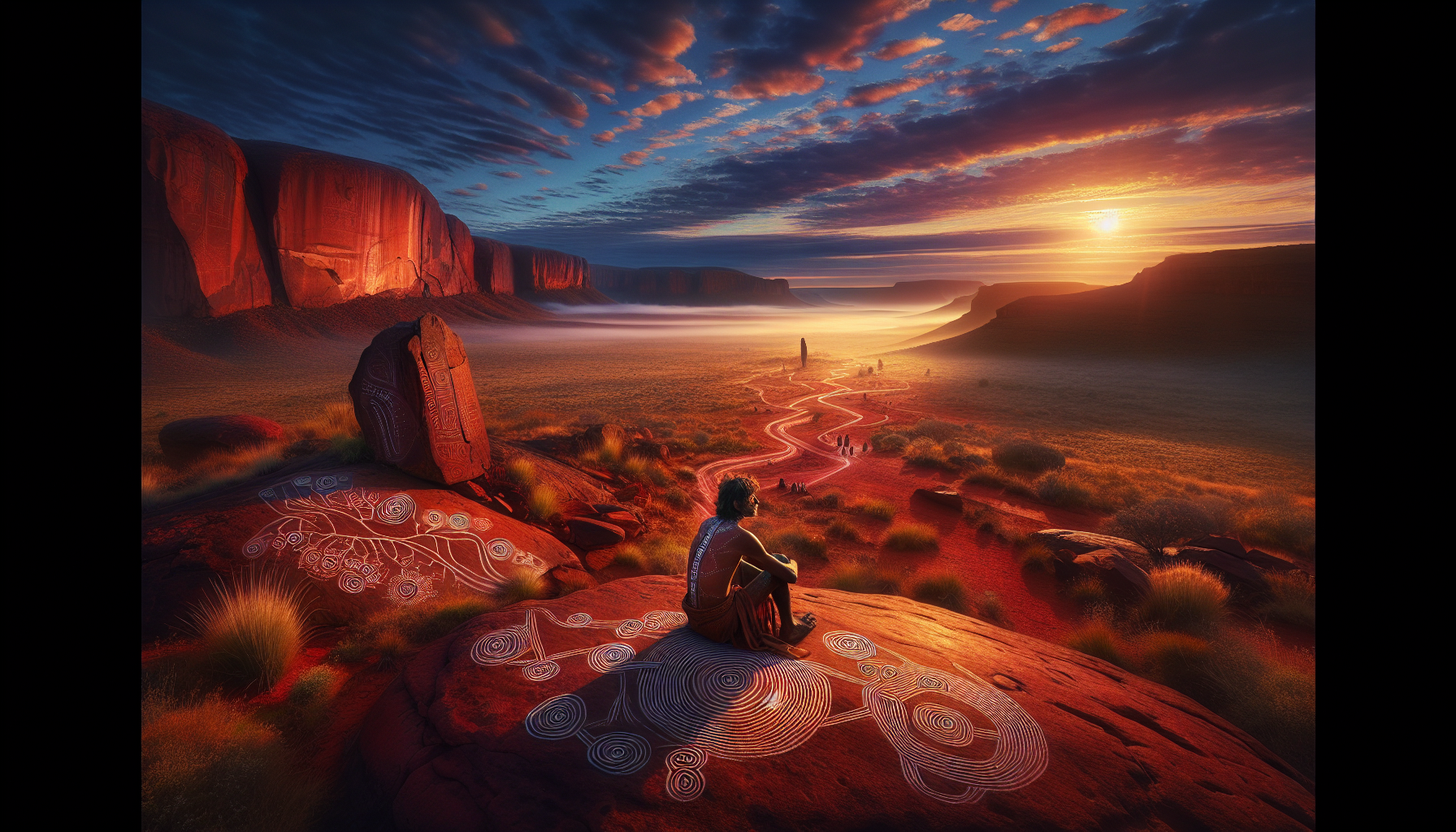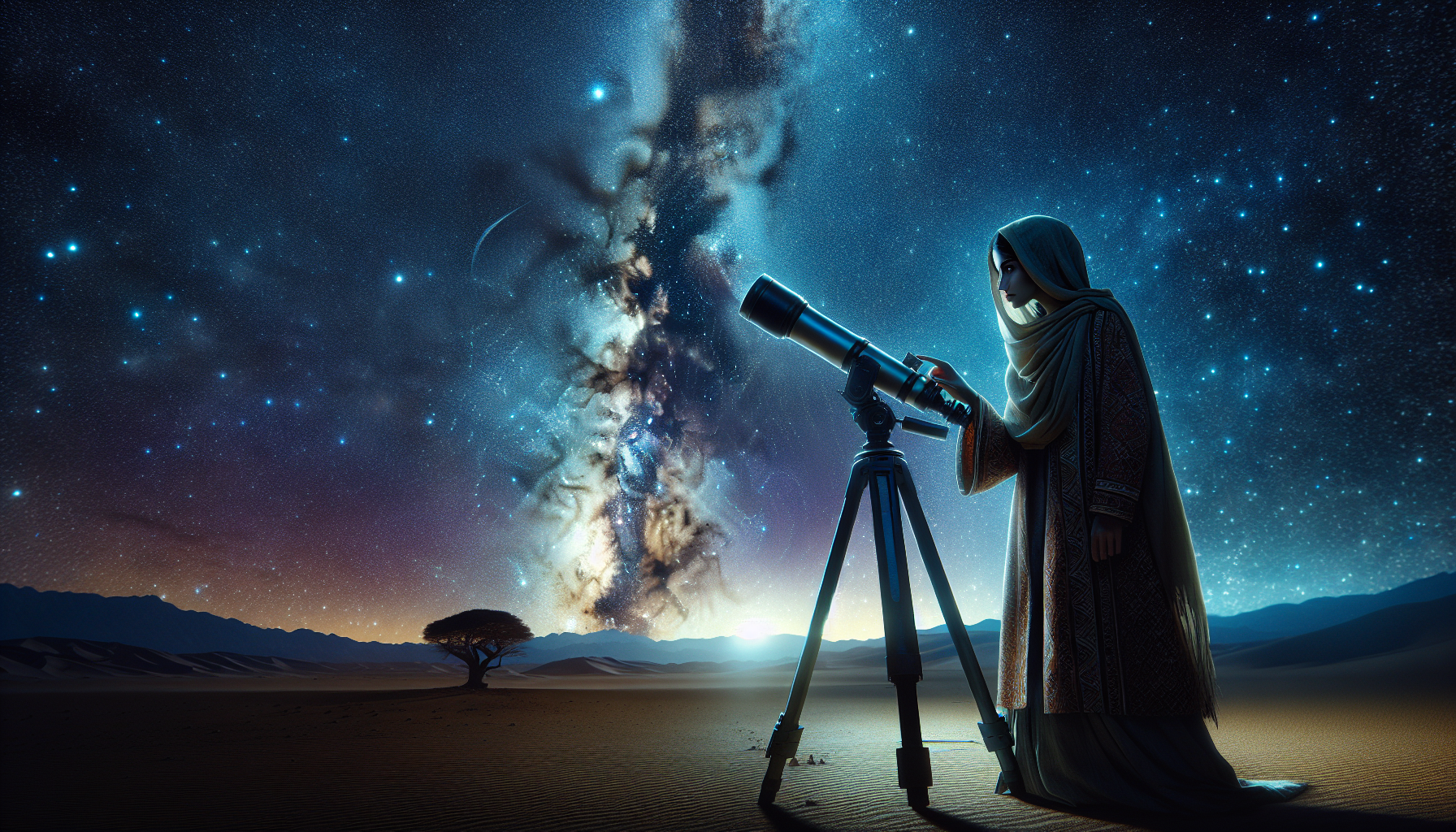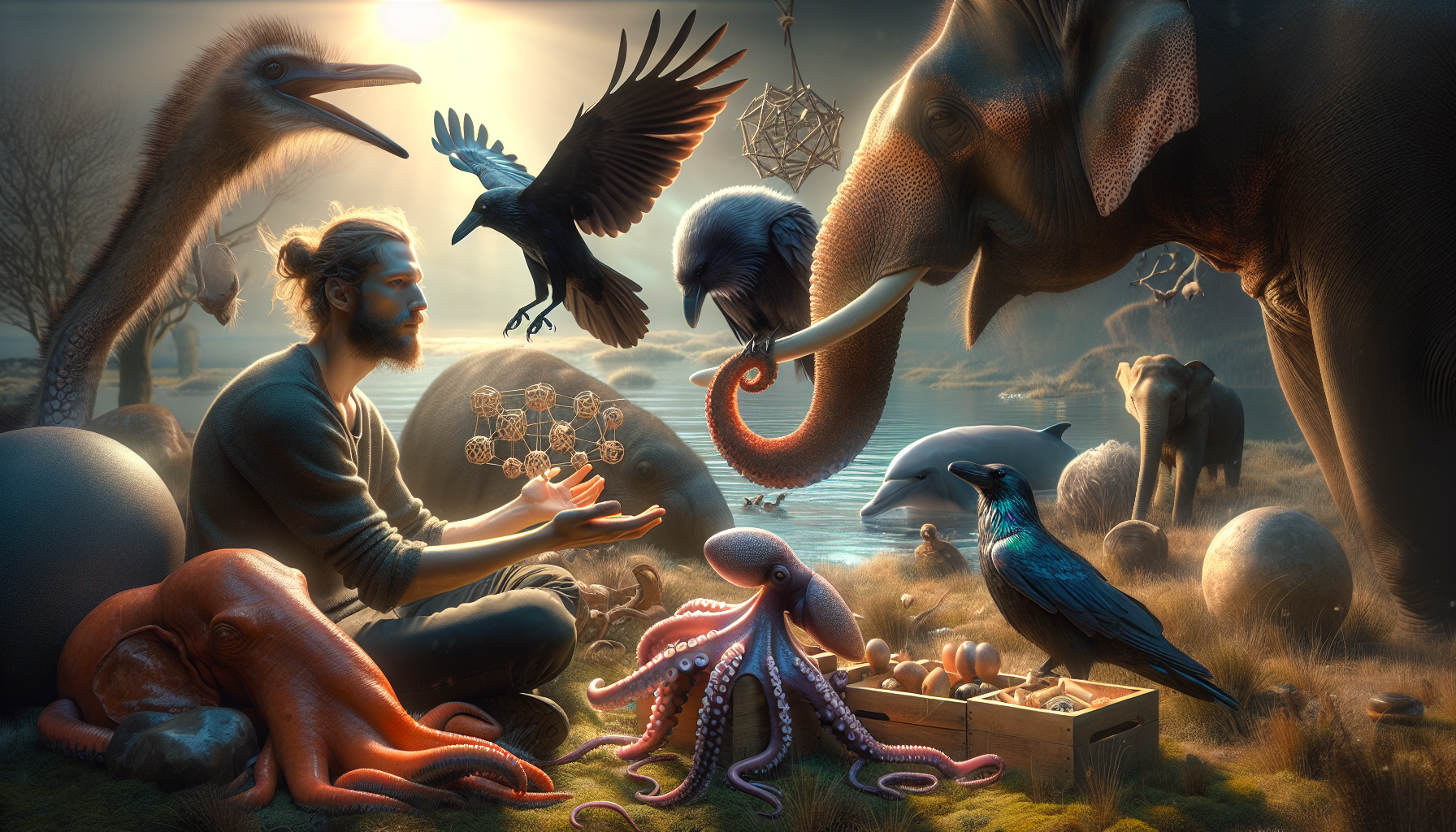In the vast, echoing expanse of the Australian outback, beneath a sky that stretches endlessly into the horizon, lies an ancient network of knowledge that has guided the Aboriginal peoples for millennia. These are the Songlines, a tapestry of oral histories, spiritual pathways, and cultural cartographies that weave together the landscape and the mind in a symbiotic dance of survival and identity. As we embark on this journey into the mind, we explore the profound wisdom embedded in Aboriginal Songlines and the transformative power of landscape thinking—a concept that offers us new perspectives on how we connect with our environment and with each other. 🌏
The Songlines, or Dreaming Tracks, are not just paths across the land; they are living stories that map the creation of the world and the routes that ancestral beings once traveled. To the Aboriginal peoples, these paths are infused with knowledge, spirituality, and law, guiding them across harsh terrains and through the challenges of life. They serve as a compass, both literal and metaphorical, through which the community navigates not only the physical world but also the complexities of cultural identity and legacy. In our exploration, we will delve into how these Songlines are sung into existence, how they are remembered, and how they continue to be a vital part of Aboriginal culture today.
Our modern world, with its rapid technological advancements and urban landscapes, often detaches us from the natural world. Yet, the principles of landscape thinking embedded in Aboriginal Songlines offer an opportunity to reconnect. By understanding the intrinsic link between the land and our narratives, we can learn how to foster a deeper sense of belonging and stewardship for the planet. This journey will reveal how landscape thinking encourages us to view our surroundings as dynamic and interconnected, prompting us to consider how our actions and stories shape the environment and, in turn, are shaped by it.
Moreover, we will examine the broader implications of embracing these ancient practices in contemporary society. What can businesses, educators, and policymakers learn from Aboriginal perspectives on connectivity and sustainability? How can the principles of Songlines inspire innovation and community building in a world that often values individualism over interconnectedness? By engaging with these questions, we aim to uncover the potential for Songlines to influence modern practices, from urban planning to environmental conservation.
Finally, our exploration will highlight the role of storytelling in preserving culture and fostering resilience. As we listen to the voices of Aboriginal elders and community leaders, we gain insight into how stories and songs serve as vessels of knowledge, bridging generations and instilling a sense of purpose and continuity. Through their wisdom, we discover how storytelling is not merely a cultural artifact but a dynamic tool for survival and transformation, offering lessons that resonate far beyond the red dust of the outback.
Join us as we journey into the mind, guided by the ancient wisdom of Aboriginal Songlines. Together, we will unravel the mysteries of landscape thinking, uncover the lessons embedded in the land, and explore the transformative power of stories that have stood the test of time. This is more than a journey through geography; it is a journey into the heart of what it means to be human. 🚶♂️
Understanding Aboriginal Songlines: A Complex Web of Knowledge
Aboriginal songlines, also known as “Dreaming tracks,” represent an intricate system of knowledge, cultural memory, and communication that have been a cornerstone of Aboriginal life for millennia. These songlines are more than mere paths across the land; they are vital cultural narratives that encode the history, spirituality, and laws of the land and its people. By singing these lines, Indigenous Australians navigate vast distances, maintaining a deep connection with their ancestors and the natural world.
Each songline tells a part of the story of the Dreamtime, the mythological time of creation when the land was formed, and the laws of existence were established. These stories are embedded in the landscape, with specific landmarks serving as chapters in a grand narrative. The act of singing these stories is both a spiritual journey and a practical method of wayfinding, as the rhythm and melody guide the traveler from one sacred site to another. This connection to the land is not only geographical but also deeply spiritual, linking the physical world to the cosmological beliefs of Aboriginal people.
To appreciate the depth and breadth of songlines, it is essential to understand their multifaceted role in Aboriginal society. They are not just routes for travel; they are repositories of knowledge, history, and law. As these lines are sung, they affirm the singer’s identity and their connection to their ancestors, ensuring the continuity of their cultural heritage. The songlines are living entities, constantly evolving as new stories are created and old ones are reinterpreted to fit the contemporary landscape.
The Role of Landscape in Aboriginal Thought
The landscape is central to Aboriginal songlines and is perceived in a way that is both unique and profound. Unlike Western notions of land ownership, where land is often seen as a commodity, Aboriginal people view the landscape as an integral part of their identity. It is both a physical and spiritual entity that reflects the stories, beliefs, and history of its people. This intimate relationship with the land is a crucial element of what is known as “landscape thinking.”
Landscape thinking involves seeing the land as a living entity, full of stories and knowledge that are passed down through generations. This approach is not only about preserving the past but also about engaging with the present and future. By understanding the land in this way, Aboriginal people maintain a sustainable relationship with their environment, ensuring that it continues to thrive for future generations.
The power of landscape thinking is evident in how it shapes Aboriginal culture and spirituality. It influences their worldview, social structures, and even their art, which often depicts the interconnectedness of land, people, and the cosmos. By recognizing the land as a sentient being, Aboriginal people can maintain a harmonious balance with nature, an understanding that is increasingly relevant in today’s world as we face environmental challenges.
Comparative Analysis of Aboriginal Songlines and Western Mapping
To further explore the significance of songlines, it is valuable to compare them with Western mapping techniques. While both systems are used for navigation and recording the landscape, they differ significantly in their approach and purpose. Below is a comparative table that highlights these differences:
| Aspect | Aboriginal Songlines | Western Mapping |
|---|---|---|
| Method of Navigation | Oral tradition, storytelling, and song | Visual maps and geographic coordinates |
| Cultural Context | Embedded in spiritual and cultural narratives | Primarily utilitarian, for navigation and resource management |
| Perception of Landscape | Living entity with spiritual significance | Physical space to be measured and categorized |
| Knowledge Transmission | Intergenerational through oral tradition | Written and digital media |
This table underscores the profound differences between Aboriginal songlines and Western mapping. While Western maps offer a practical tool for navigation and resource management, they often lack the cultural depth and spiritual significance embedded in songlines. For Aboriginal people, each songline is a living record of their history, spirituality, and connection to the land, offering a holistic approach to understanding and interacting with the world.
For a more immersive understanding of songlines, we recommend watching this informative YouTube video: The Art of Mapping – Songlines and Beyond from the channel ABC News Australia. This video provides visual insights and narratives from Indigenous voices, offering a richer perspective on this profound cultural practice.
The Interplay Between Songlines and Contemporary Aboriginal Identity
In the contemporary world, songlines continue to play a pivotal role in shaping Aboriginal identity and cultural continuity. As Indigenous Australians navigate the challenges of modernity, they draw strength from these ancient traditions, using songlines to reaffirm their connection to the land and each other. This dynamic interplay between past and present is vital for maintaining cultural resilience in the face of external pressures.
For many Aboriginal communities, songlines serve as a bridge between traditional and contemporary life. They are a source of strength and pride, providing a sense of belonging and continuity. By engaging with these stories, younger generations can connect with their heritage, ensuring that the wisdom of their ancestors is not lost amidst the rapid changes of the modern world.
Additionally, songlines offer a framework for addressing contemporary issues such as land rights, environmental conservation, and cultural preservation. By emphasizing the spiritual and cultural importance of the land, Aboriginal people can advocate for policies that respect and protect their heritage. This approach not only benefits Indigenous communities but also contributes to a broader understanding of sustainable living and environmental stewardship.
Preserving Songlines for Future Generations
The preservation of songlines is essential for the cultural survival of Aboriginal people. As custodians of these stories, Indigenous communities face the challenge of maintaining their traditions in a rapidly changing world. Efforts to document and protect songlines are crucial for ensuring that they continue to thrive for future generations.
Organizations and individuals are working to record and share these stories, using both traditional and modern methods. Initiatives like digital mapping projects and educational programs aim to raise awareness of the significance of songlines, fostering a greater appreciation for Aboriginal culture. By embracing technology, Aboriginal people can share their stories with a wider audience, promoting cross-cultural understanding and dialogue.
To engage with the rich tapestry of Aboriginal songlines, consider exploring the following resources:
- Australian Institute of Aboriginal and Torres Strait Islander Studies – Offers a wealth of resources on Aboriginal culture and songlines.
- National Museum of Australia – Features exhibits and information on Aboriginal songlines and their significance.
- ABC News Article on Songlines – Discusses recent efforts to map and preserve songlines.
The exploration of songlines offers a profound insight into the complex and enduring relationship between Aboriginal people and their land. As we continue to learn from these ancient traditions, we are reminded of the importance of cultural preservation and the value of diverse perspectives in shaping our understanding of the world.

Conclusion
In our exploration of Aboriginal songlines and the profound concept of landscape thinking, we have embarked on a journey into a realm where tradition, environment, and human cognition are intertwined. This journey reveals not only the rich cultural tapestry of Aboriginal societies but also the universal insights these traditions offer to contemporary thought.
Firstly, we delved into the concept of songlines—intricate pathways that traverse the Australian landscape, holding stories, knowledge, and spiritual significance for Aboriginal communities. These songlines are far more than just physical routes; they are dynamic narrative maps that guide individuals across the land and through life itself. Each songline encapsulates a deep understanding of the environment, ecology, and the symbiotic relationship between people and nature. By following these pathways, Aboriginal peoples maintain a living connection with their ancestors, the land, and their cultural heritage.
Understanding songlines requires embracing the notion of landscape thinking, a paradigm that extends beyond geographical features to include the cultural and spiritual dimensions of a place. Landscape thinking encourages us to perceive the environment not as a static backdrop but as an active participant in our lives, influencing our perceptions, decisions, and identities. This holistic approach is increasingly recognized for its value in addressing modern challenges, such as environmental sustainability and cultural preservation.
Throughout this article, we highlighted the significance of storytelling as a tool for knowledge transmission within Aboriginal cultures. Stories embedded in songlines serve as vessels for wisdom, morality, and survival techniques, passed down through generations. These narratives reinforce a sense of belonging and responsibility, reminding individuals of their role within the broader ecosystem. In a world where digital distractions often dominate, there is much to learn from the oral traditions of the Aboriginal peoples about the power of storytelling and its ability to foster community and resilience.
Moreover, we discussed the impact of colonization on Aboriginal communities and their songlines. The disruption of these sacred paths and the imposition of foreign systems of land management have had profound consequences, not only for the people but for the land itself. Yet, despite these challenges, Aboriginal communities continue to fight for the recognition and preservation of their cultural heritage. Their resilience serves as an inspiring testament to the enduring power of cultural identity and the importance of protecting indigenous knowledge systems.
As we conclude, it’s essential to acknowledge the broader implications of embracing Aboriginal songlines and landscape thinking. In an era marked by environmental crises and cultural homogenization, these ancient practices offer valuable lessons. They remind us of the interconnectedness of all life and the importance of living in harmony with the natural world. By integrating these principles into our own lives, we can foster a deeper appreciation for diverse cultures and the planet we call home.
We encourage you, dear reader, to reflect on the insights gained from this exploration. Consider how you might apply the principles of landscape thinking in your own life, whether by nurturing a more profound connection to your environment, engaging with local indigenous communities, or advocating for the preservation of cultural and ecological heritage.
If this journey has inspired you, we invite you to share your thoughts and experiences in the comments section. Engage with others who are passionate about cultural preservation and environmental stewardship. Additionally, consider sharing this article with friends and family, sparking conversations about the importance of indigenous knowledge systems and their relevance in today’s world.
In the words of an Aboriginal proverb, “We are all visitors to this time, this place. We are just passing through. Our purpose here is to observe, to learn, to grow, to love… and then we return home.” Let this wisdom guide your journey as you navigate your own songlines through life.
For further exploration, you may find these resources enlightening:
– Australian Institute of Aboriginal and Torres Strait Islander Studies (AIATSIS)
– The Aboriginal Heritage Office
Let us walk this path together, honoring the wisdom of the past while forging a sustainable future. 🌿
Toni Santos is a visual storyteller and cognitive explorer whose work delves into the mental landscapes of ancient cultures—revealing how different civilizations perceived reality, memory, and meaning long before modern psychology existed. Through symbolic imagery and narrative inquiry, Toni brings to life the divergent ways of thinking that shaped lost worlds.
His creative path is guided by a fascination with non-linear logic, oral cosmologies, and the mythic frameworks that once guided decision-making, emotion, and identity. From memory temples carved in stone to visual languages encoded in textiles, every piece Toni creates reflects the vast cognitive diversity of the human story.
With a foundation in visual design and cultural semiotics, Toni blends analytical depth with artistic expression. His work goes beyond historical reconstruction—it reawakens the embodied, intuitive, and ritual-based intelligence of ancient minds, inviting us to question the assumptions of modern thought.
As the mind behind Vizovex, Toni curates visual studies, essays, and immersive content that explore forgotten epistemologies—ways of knowing that connected people to myth, land, and each other in profoundly different ways.
His work is a tribute to:
The symbolic intelligence of pre-modern cultures
The neural diversity embedded in ancient rituals and storytelling
The deep memory systems that shaped identity and perception
Whether you’re a researcher, an artist, or a seeker of hidden wisdom, Toni invites you to enter a space where cognition is culture, and where the past speaks through signs, cycles, and symbols—one myth, one memory, one mind at a time.





